
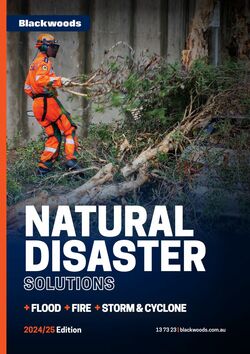
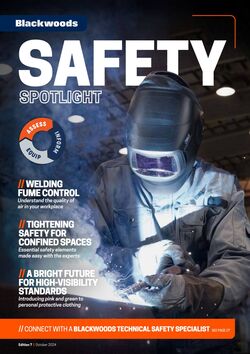
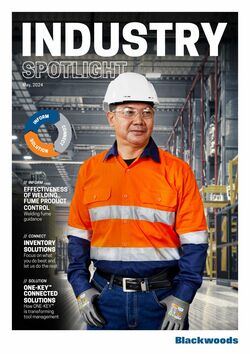
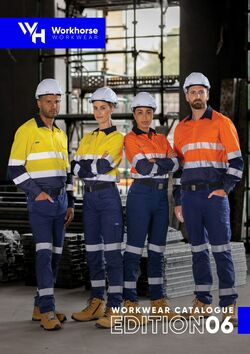
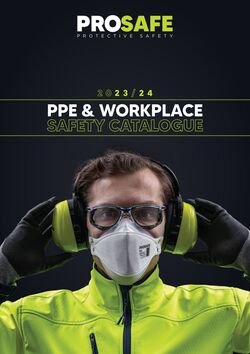
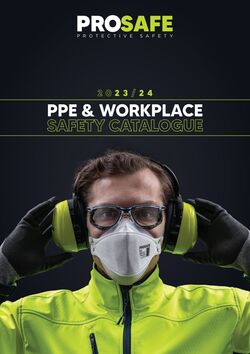
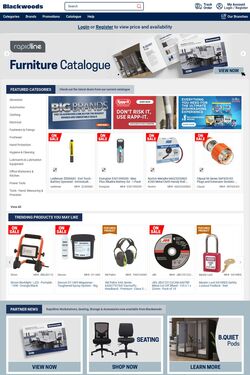
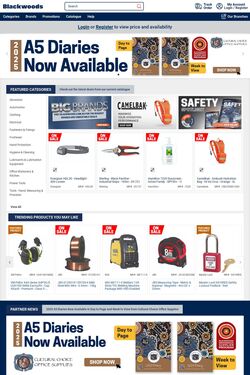
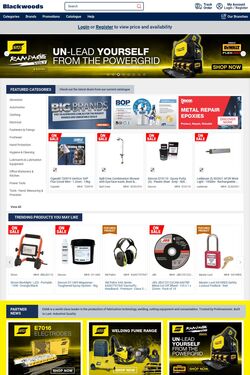
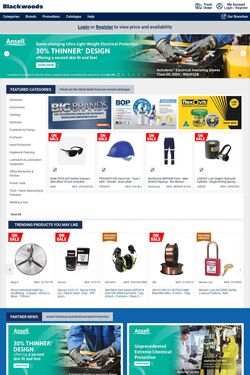
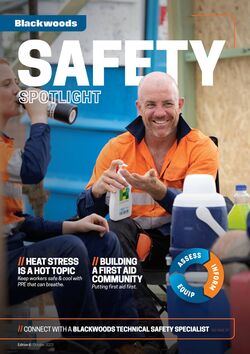
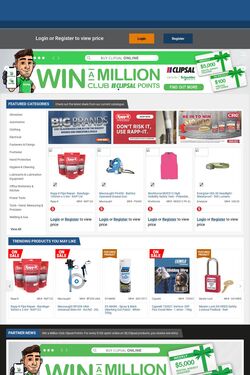
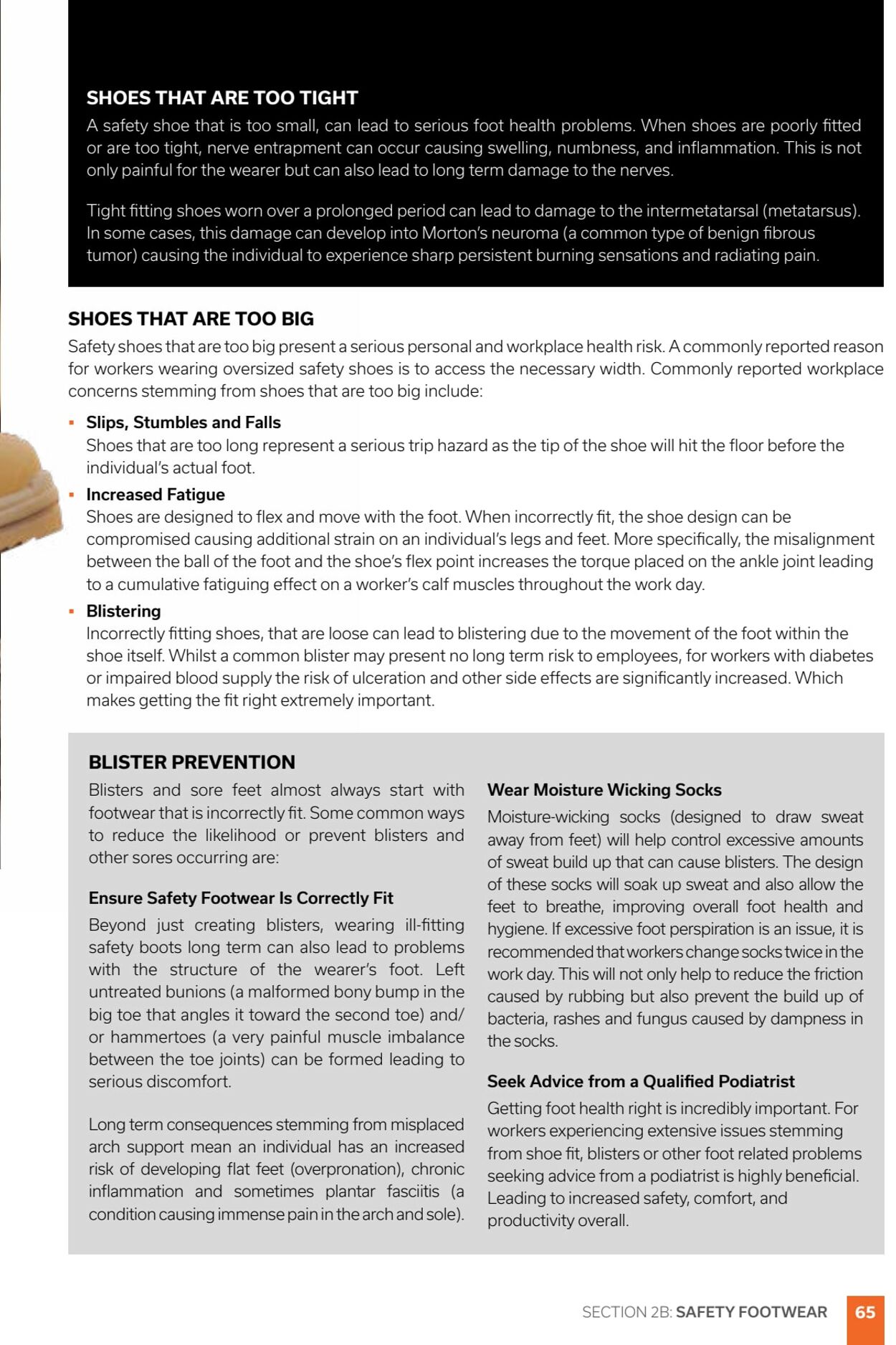
Products in this catalogue
SHOES THAT ARE TOO TIGHT A safety shoe that is too small, can lead to serious foot health problems. When shoes are poorly fitted or are too tight, nerve entrapment can occur causing swelling, numbness, and inflammation. This is not only painful for the wearer but can also lead to long term damage to the nerves. Tight fitting shoes worn over a prolonged period can lead to damage to the intermetatarsal (metata: In some cases, this damage can develop into Morton's neuroma (a common type of benign fibrous tumor) causing the individual to experience sharp persistent burning sensations and radiating pain. SHOES THAT ARE TOO BIG Safety shoes that are too big present a serious personal and workplace health risk. Acommonly reported reason for workers wearing oversized safety shoes is to access the necessary width. Commonly reported workplace concerns stemming from shoes that are too big include: * Slips, Stumbles and Falls Shoes that are too long represent a serious trip hazard as the tip of the shoe will hit the floor before the individual's actual foot » Increased Fatigue Shoes are designed to flex and move with the foot. When incorrectly fit, the shoe design can be compromised causing additional strain on an individual's legs and feet. More specifically, the misalignment between the ball of the foot and the shoe's flex point increases the torque placed on the ankle joint leading to a cumulative fatiguing effect on a worker's calf muscles throughout the work day. = Blistering Incorrectly fitting shoes, that are loose can lead to blistering due to the movement of the foot within the shoe itself. Whilst a common blister may present no long term risk to employees, for workers with diabetes or impaired blood supply the risk of ulceration and other side effects are significantly increased. Which makes getting the fit right extremely important BLISTER PREVENTION Blisters and sore feet almost always start with footwear that is incorrectly fit. Some common ways to reduce the likelihood or prevent blisters and other sores occurring are: Ensure Safety Footwear Is Correctly Fit Beyond just creating blisters, wearing ill-fitting safety boots long term can also lead to problems with the structure of the wearer's foot. Left untreated bunions (a malformed bony bump in the big toe that angles it toward the second toe) and/ or hammertoes (a very painful muscle imbalance between the toe joints) can be formed leading to serious discomfort. Long term consequences stemming from misplaced arch support mean an individual has an increased risk of developing flat feet (overpronation), chronic inflammation and sometimes plantar fasciitis (a condition causing immense pain in the arch and sole). Wear Moisture Wicking Socks Moisture-wicking socks (designed to draw sweat away from feet) will help control excessive amounts of sweat build up that can cause blisters. The design of these socks will soak up sweat and also allow the feet to breathe, improving overall foot health and hygiene. If excessive foot perspiration is an issue, it is recommended that workers change socks twice in the work day. This will not only help to reduce the friction caused by rubbing but also prevent the build up of bacteria, rashes and fungus caused by dampness in the socks. Seek Advice from a Qualified Podiatrist Getting foot health right is incredibly important. For workers experiencing extensive issues stemming from shoe fit, blisters or other foot related problems seeking advice from a podiatrist is highly beneficial. Leading to increased safety, comfort, and productivity overall. SECTION 2B: SAFETY FOOTWEAR [e=
| Name | Details |
|---|